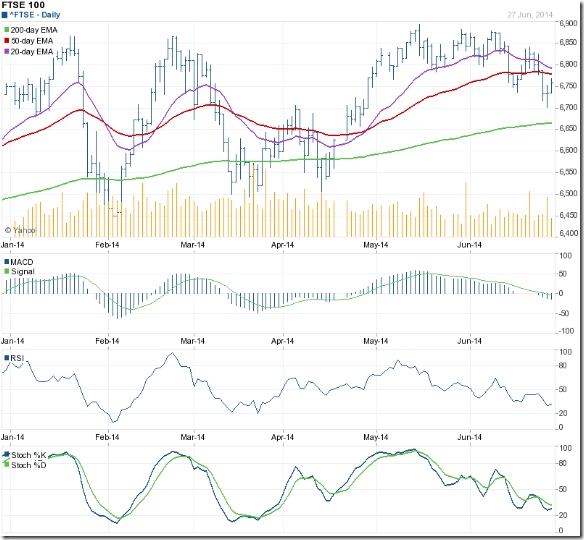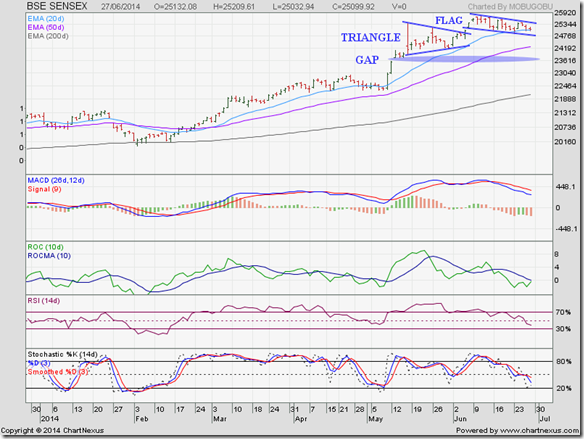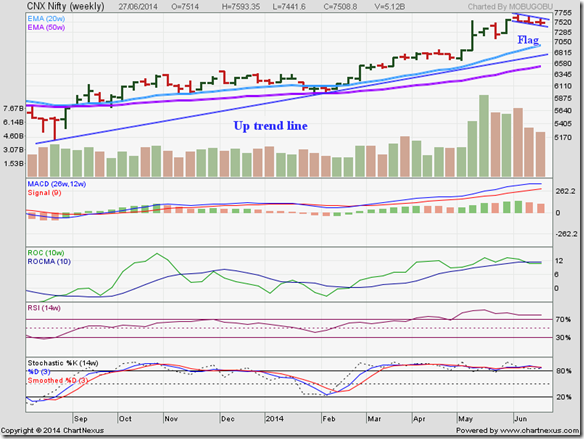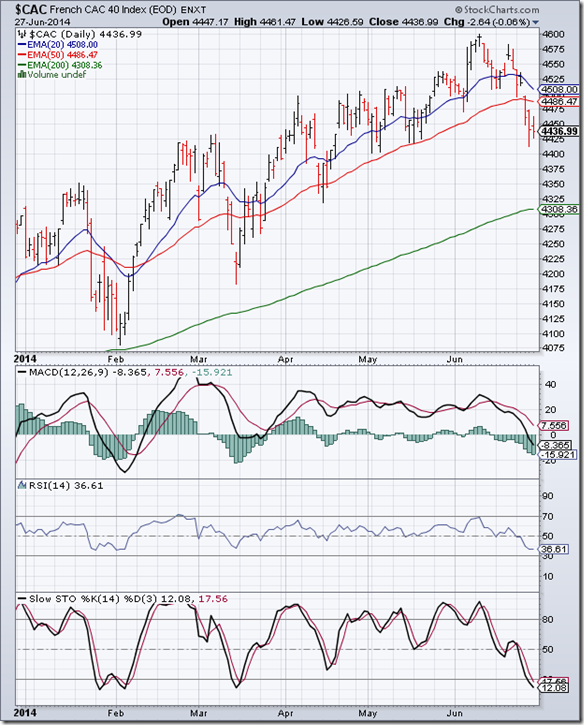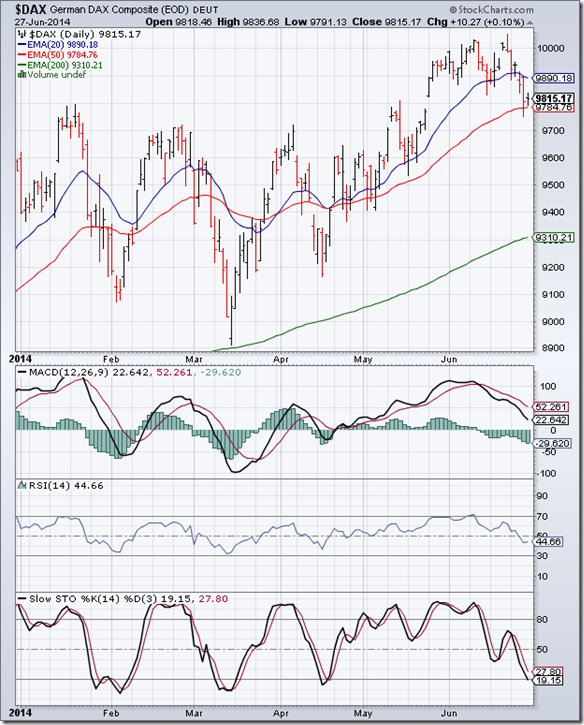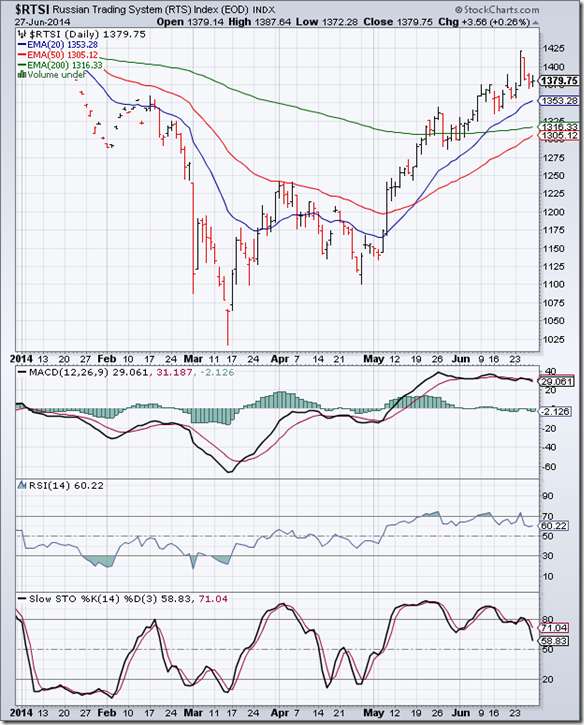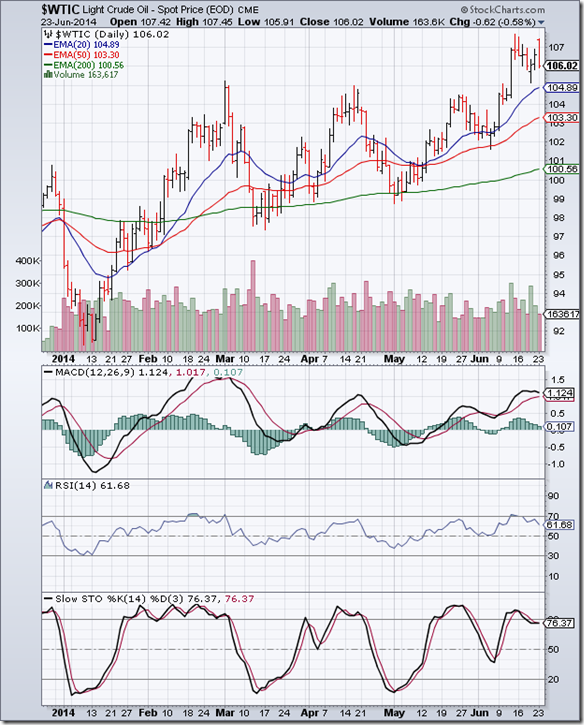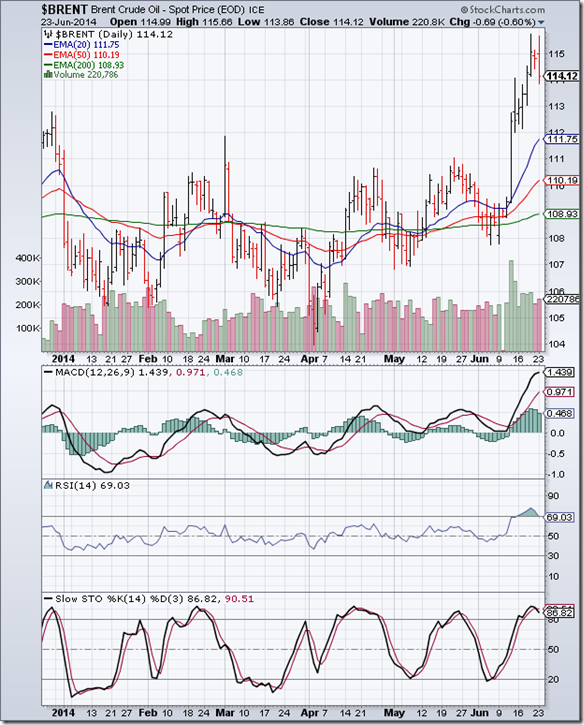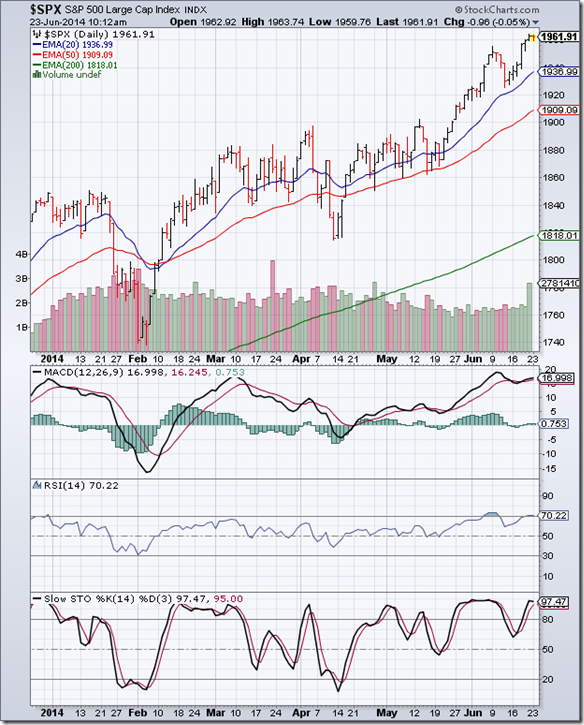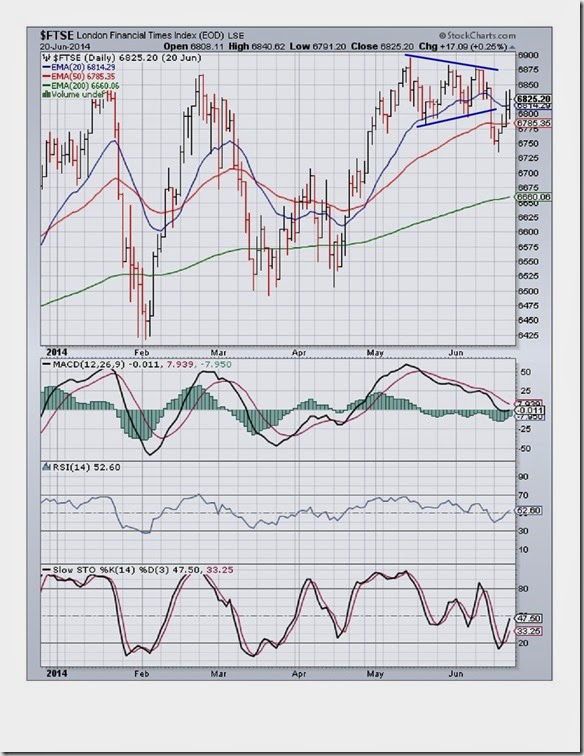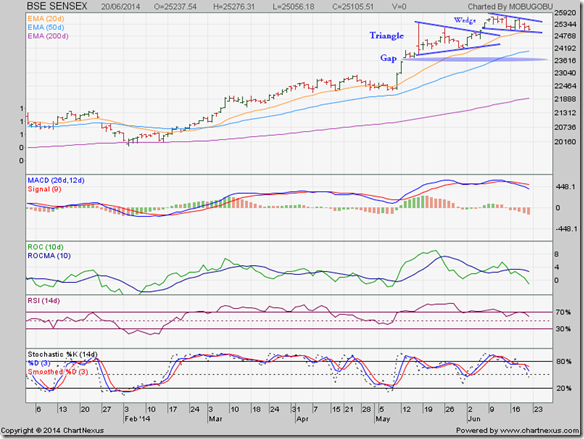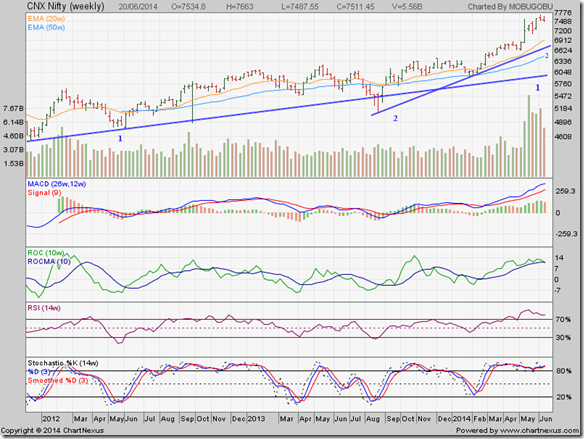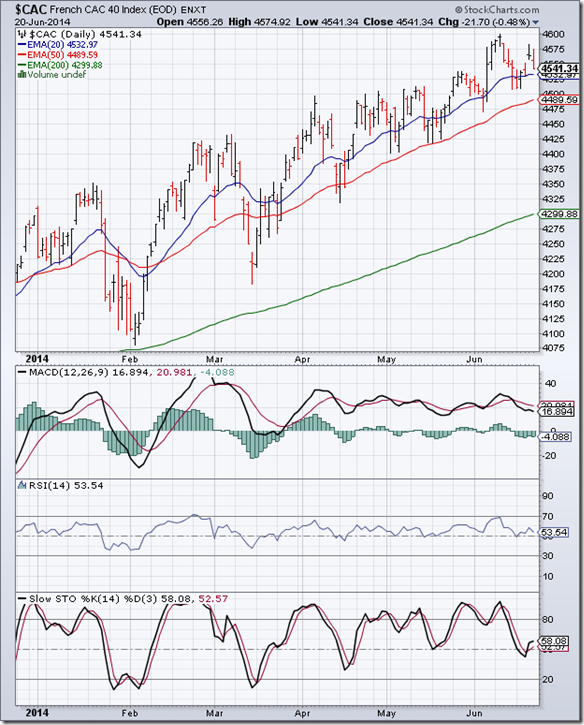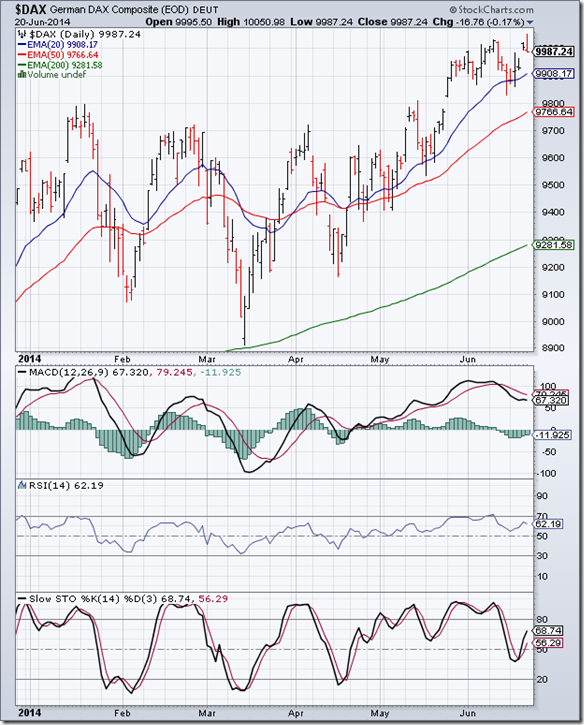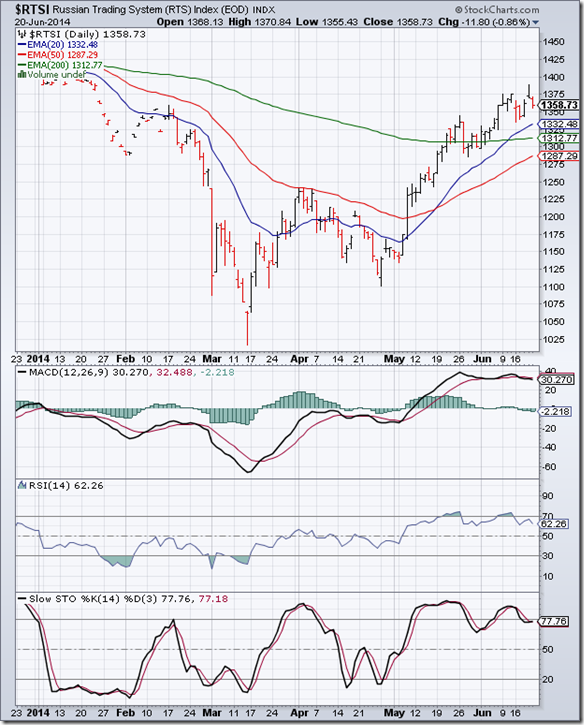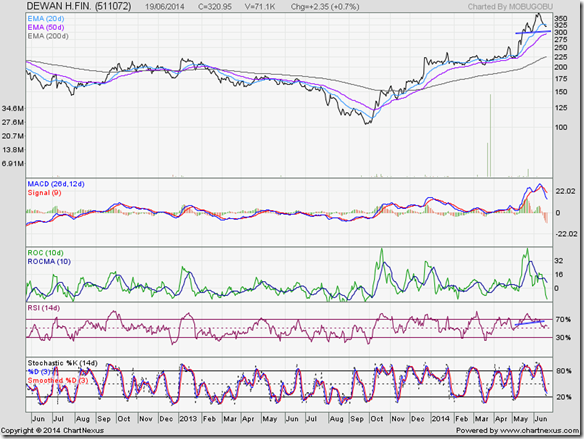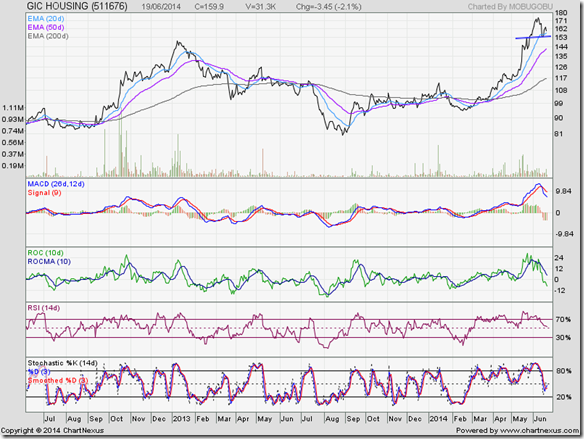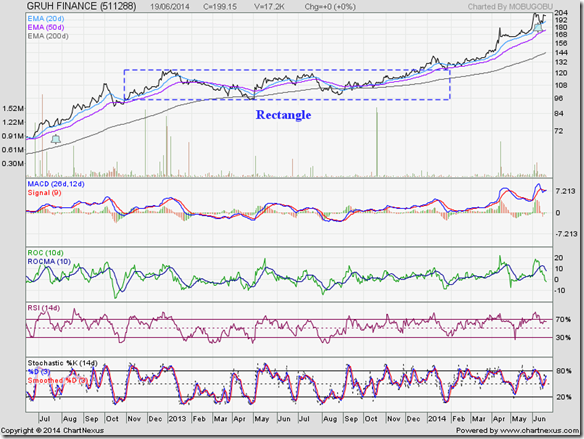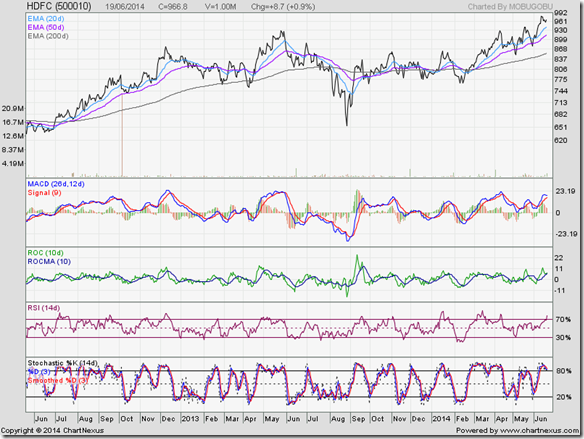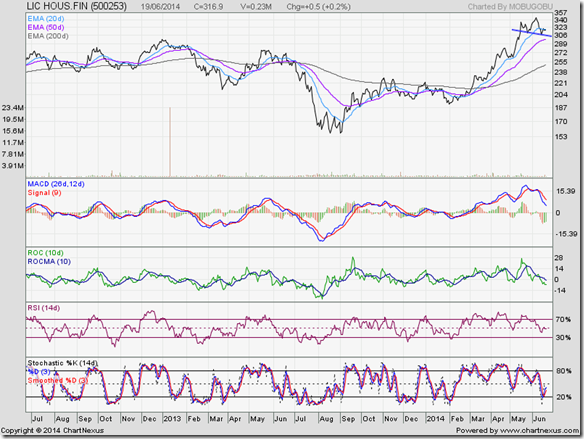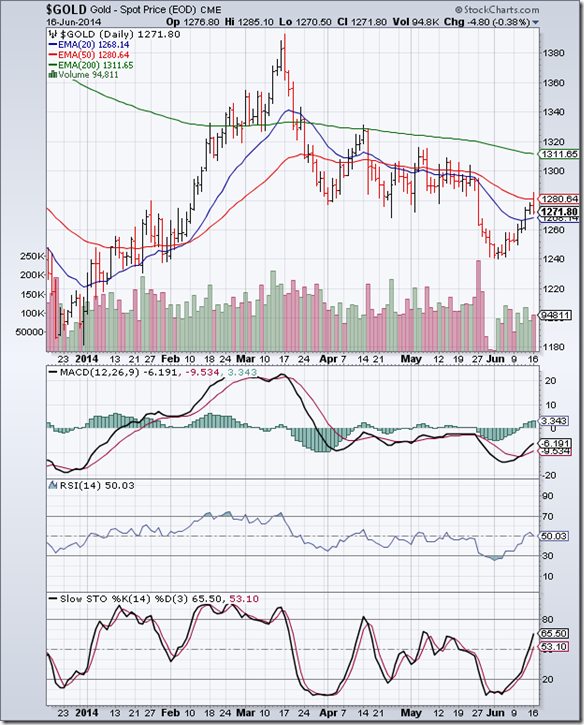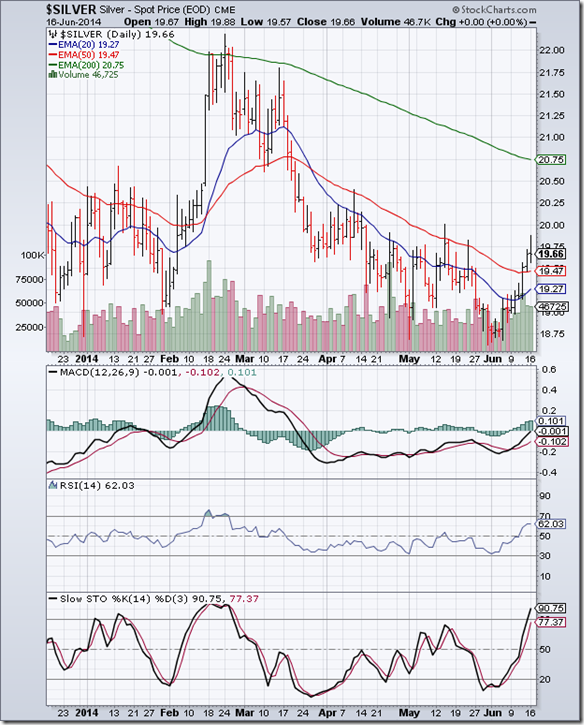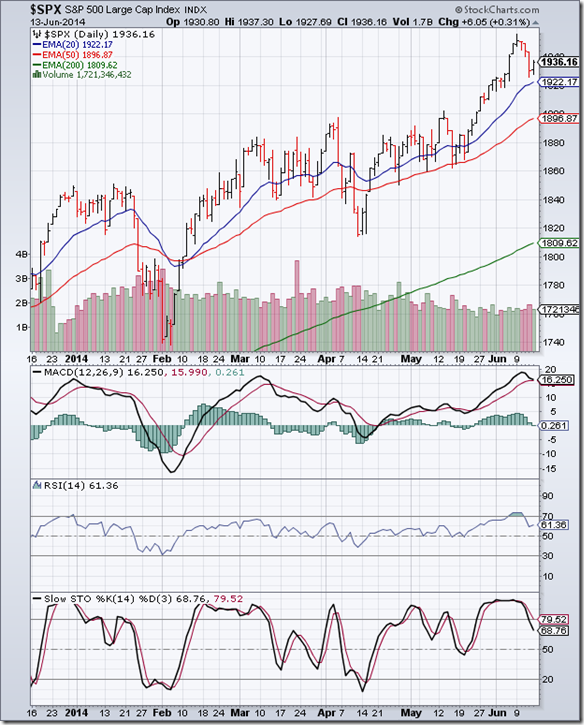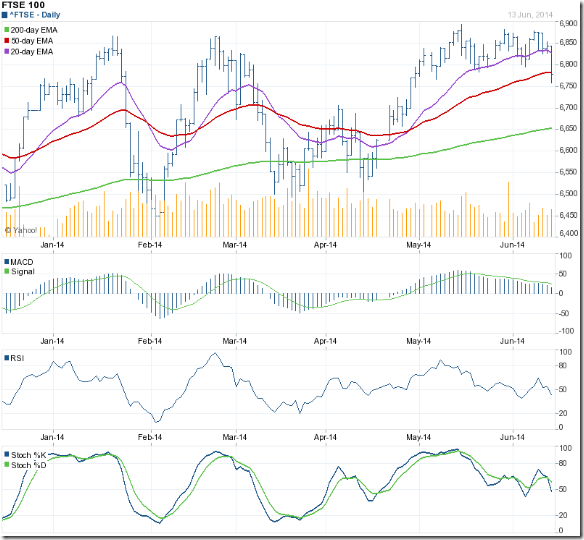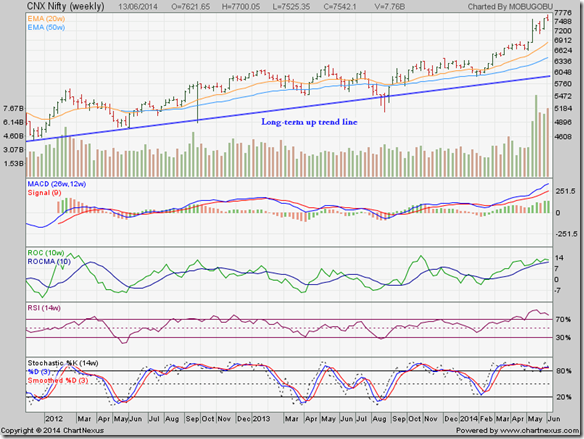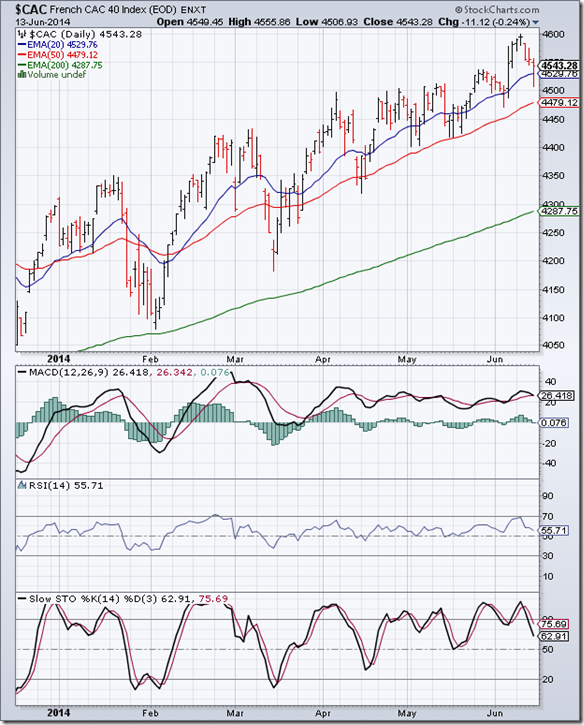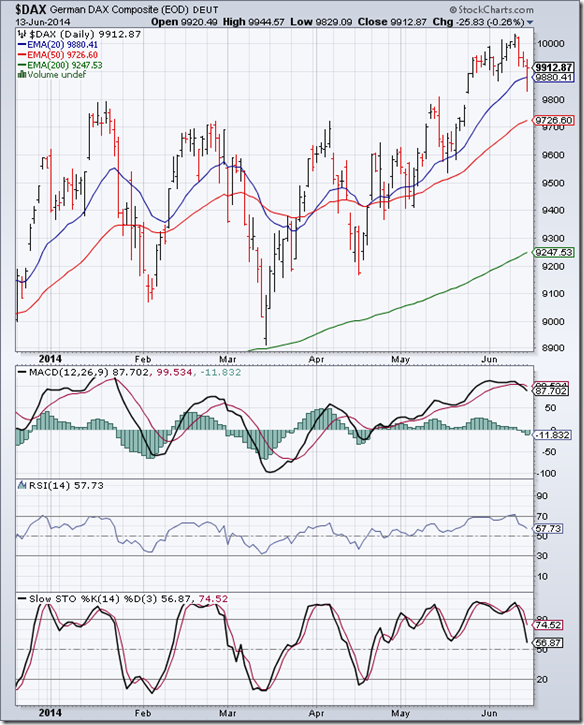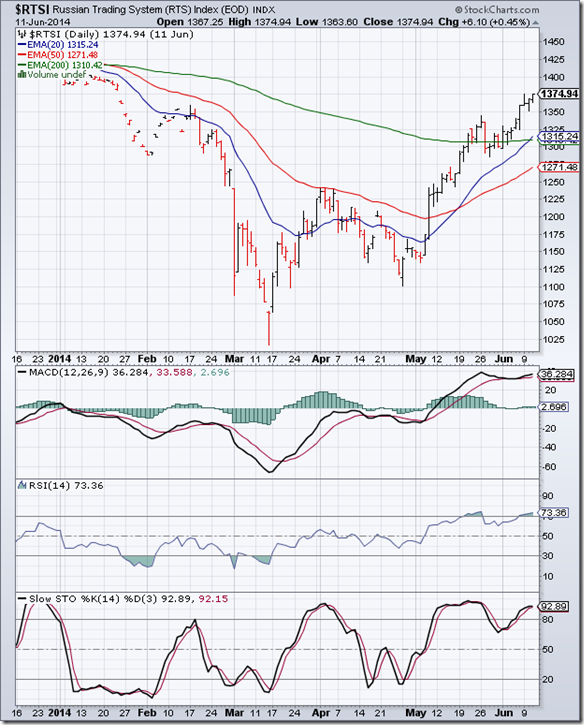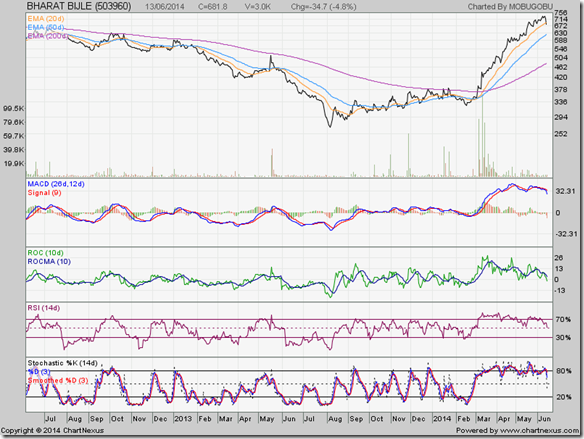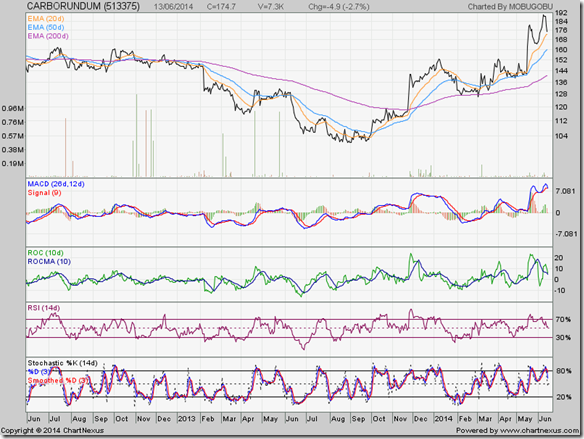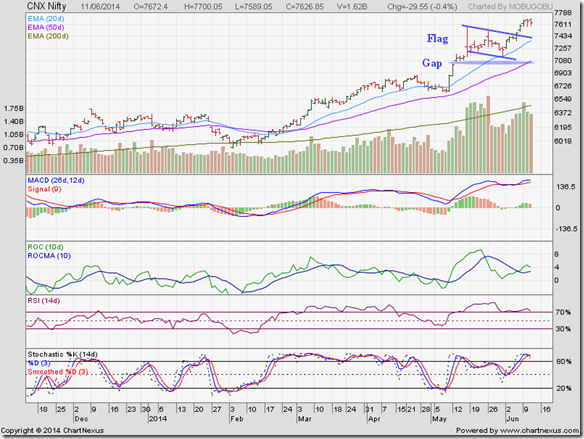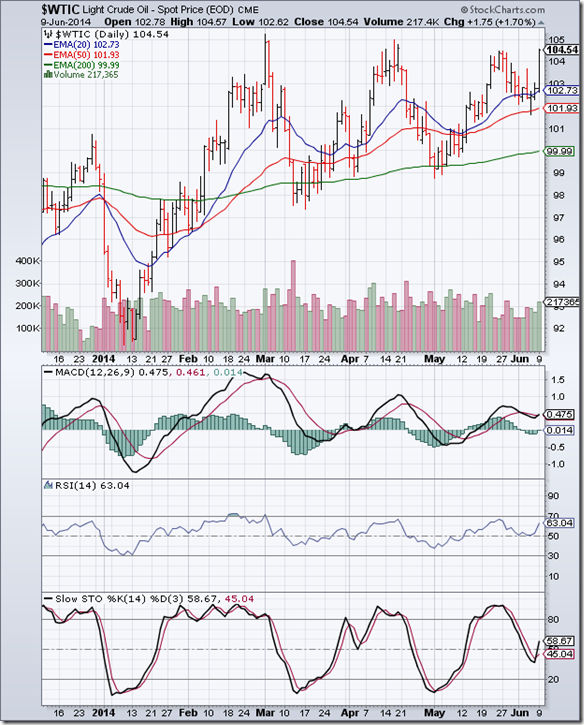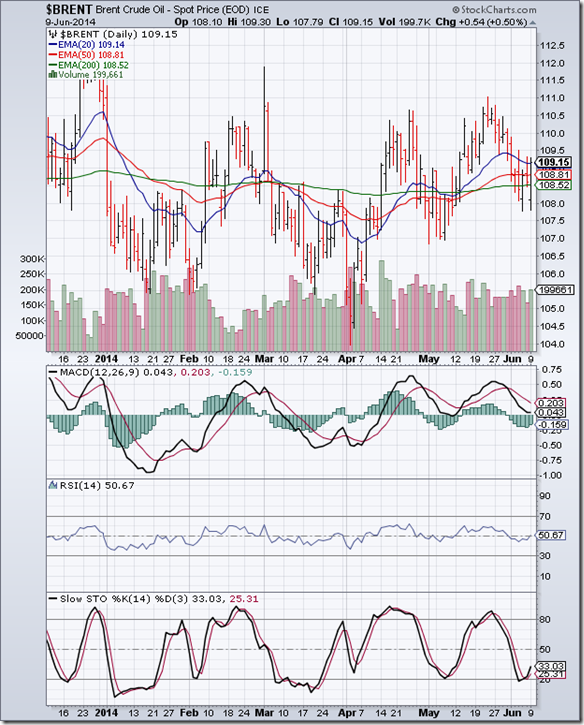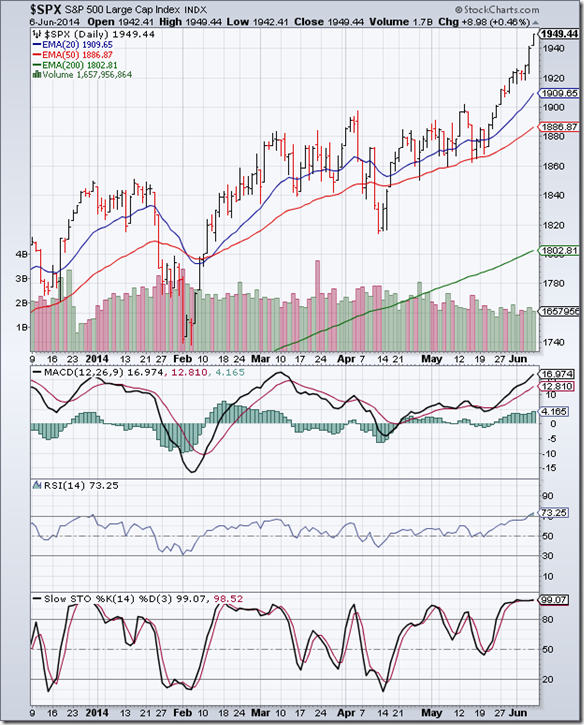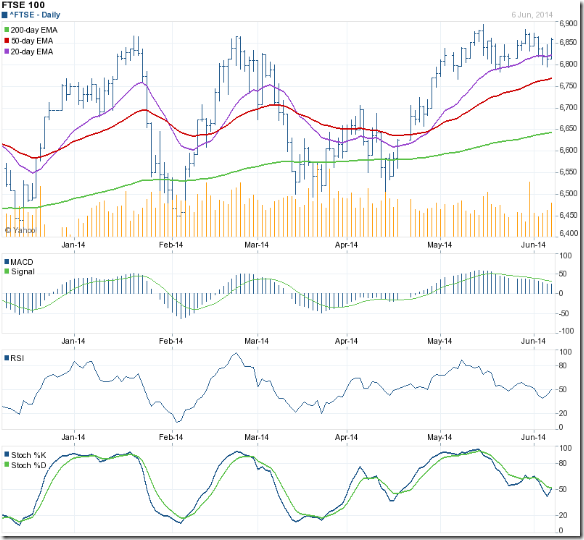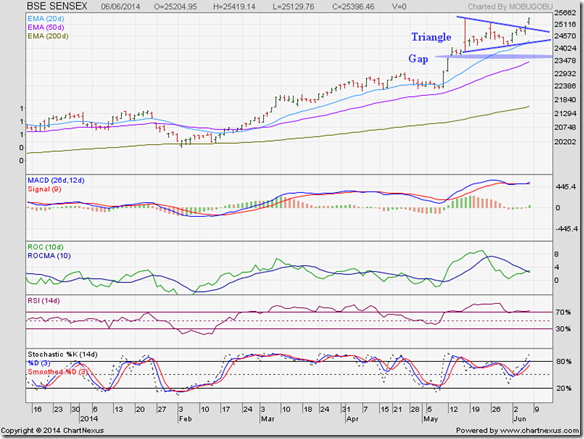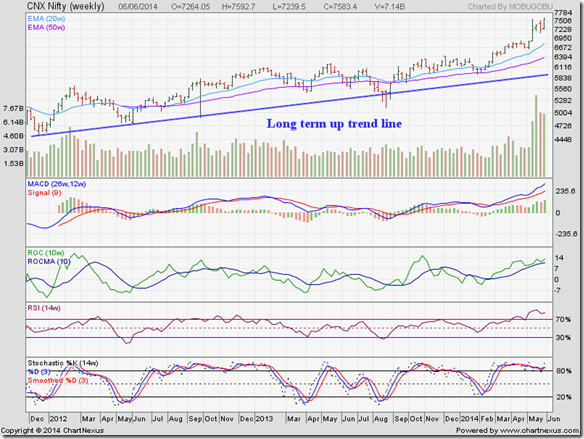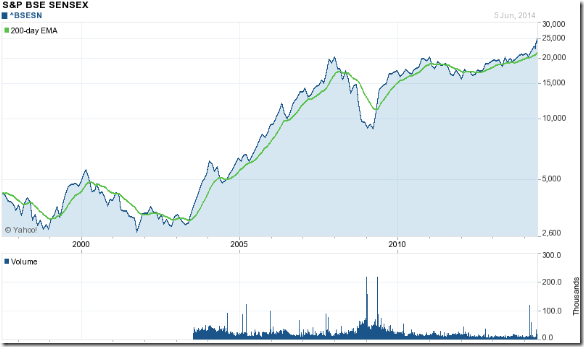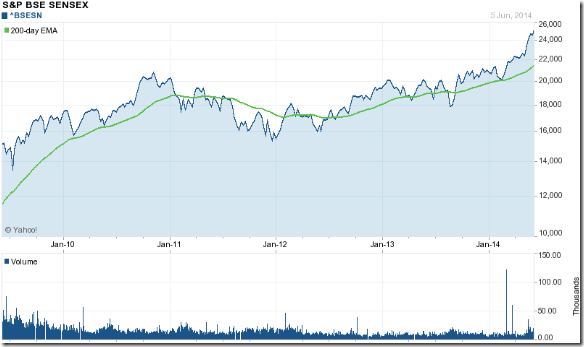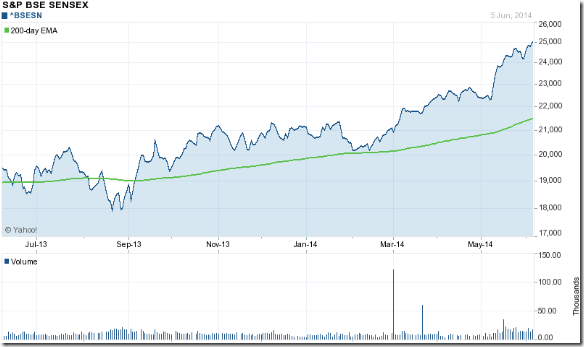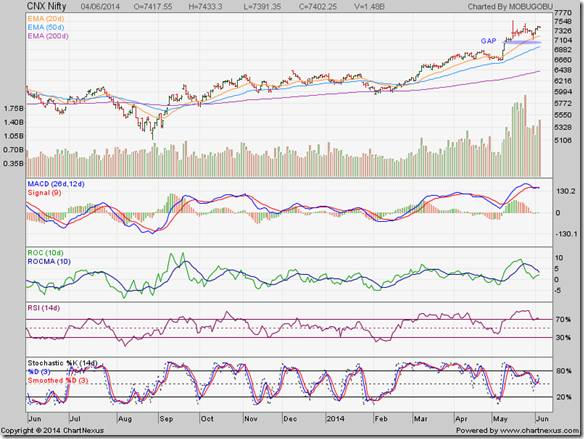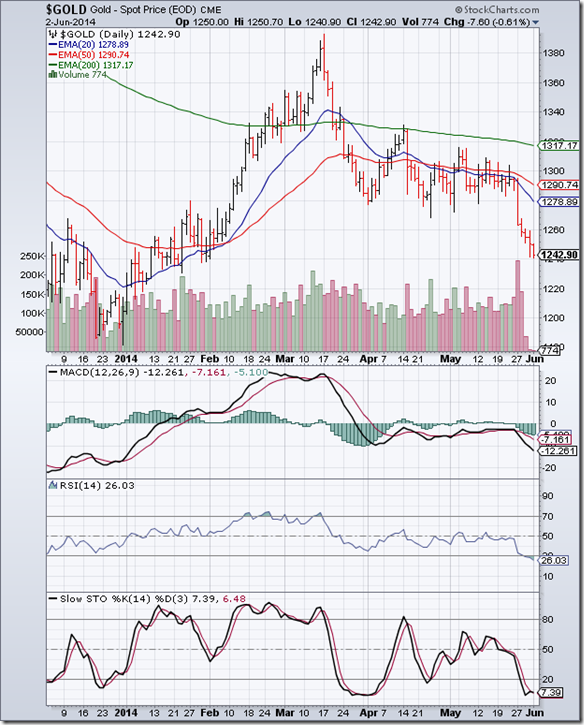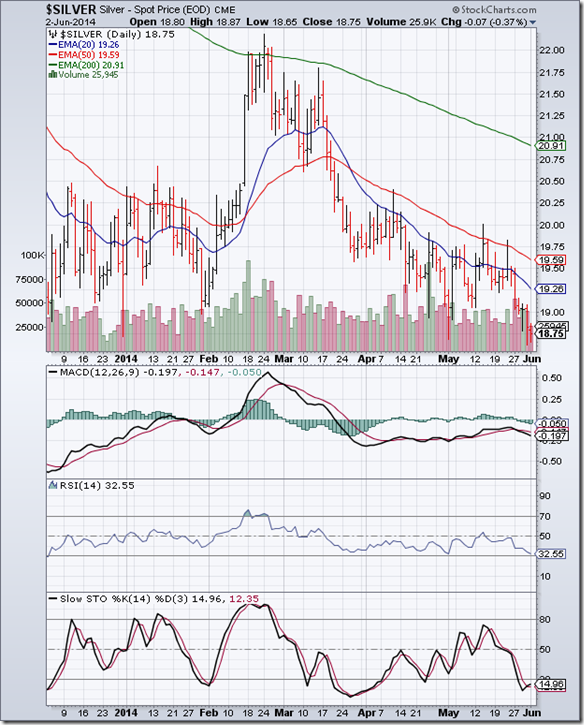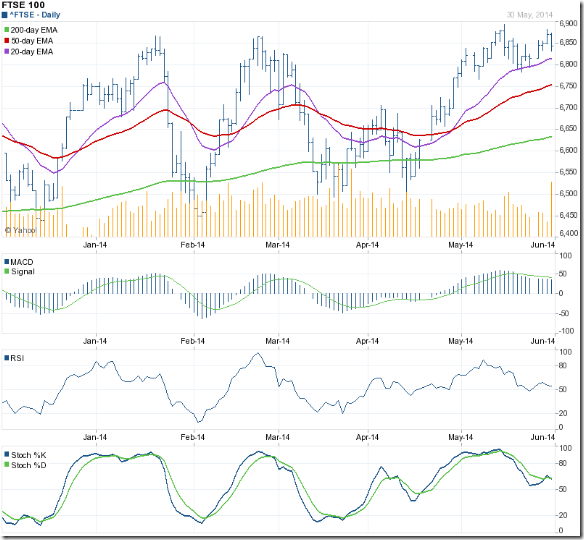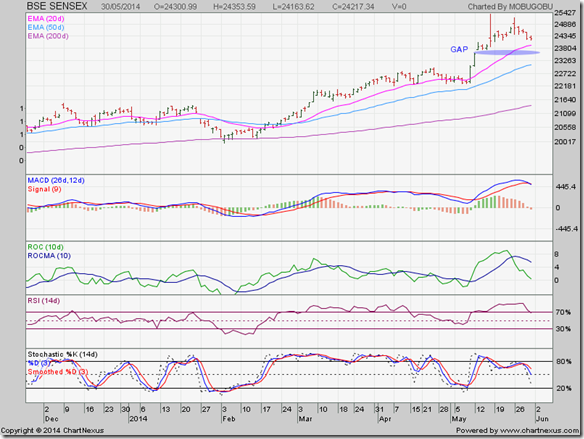S&P 500 Index Chart
The 6 months daily bar chart pattern of S&P 500 touched another new intra-day high of 1968 on Tue. Jun 24. However, formation of a ‘reversal day’ pattern (higher high, lower close) led to a quick drop to test support from the rising 20 day EMA.
By Fri. Jun 27 the index recovered to close almost flat for the week. All three EMAs are rising and the index is trading above them in a long-term bull market. Despite the weak GDP number, the relentless rise of the index continues.
Technical indicators have corrected overbought conditions, but remain in bullish zones. MACD has slipped down from its overbought zone, and crossed below its signal line. RSI and Slow stochastic are just below their respective overbought zones.
All three indicators are showing negative divergences by failing to touch new highs with the index. Some consolidation or correction is a possibility. Use the likely dip to add, or hold with a trailing stop-loss.
FTSE 100 Index Chart
The 6 months daily bar chart pattern of FTSE 100 had pulled back sharply after breaking down from a ‘symmetrical triangle’ pattern. In last week’s analysis it had appeared that the break down was a ‘false’ one, and bulls were reasserting themselves, as the index closed the week above all three EMAs.
However, the index was still in a bearish ‘lower tops - lower bottoms’ pattern, and the following cautionary remark was added: “…the top of 6895 touched on May 15 ‘14 needs to be crossed before bulls can regain complete control.”
Bears were not in a mood to give up, and struck swiftly. The index dropped to the 6700 level before recovering to close above the 6750 level, but below its 20 day and 50 day EMAs for the week.
Technical indicators are looking bearish. MACD is falling below its signal line in negative territory. RSI and Slow stochastic are just above their respective oversold zones. A test of support from the rising 200 day EMA may be in the offing.

